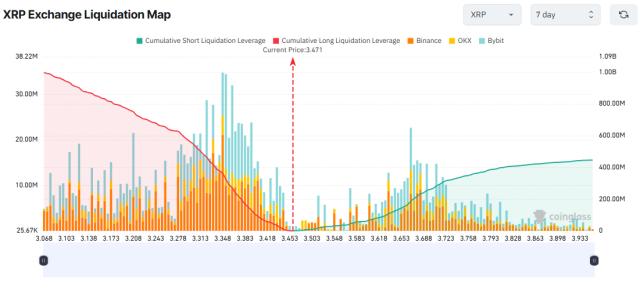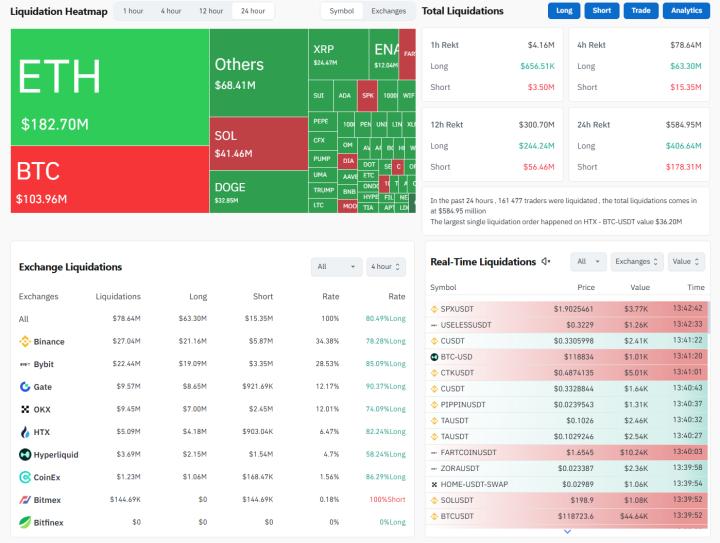
Article Source: Talking Outside the Lines
In the past few days, Bitcoin has continued to break new highs, reaching up to $123,000, and according to the previous plan, we sold off 10% of our position yesterday (7.14). Regarding our investment plan for this cycle, we have shared specific details in previous articles:
In 2022, we developed a 20-month BTC investment plan, consistently buying BTC monthly, ultimately completing this investment plan in January 2024, with the average purchase cost of newly added Bitcoin positions around $25,000. At the same time, based on our expectations and goals for this bull market (expecting BTC to reach $100,000-$120,000, with a goal of achieving 3-5 times overall portfolio returns), we also created two selling plans, namely PlanA and PlanB previously shared in our articles (ultimately executing PlanA).
Up to now, I have executed 3 selling operations as planned, on December 5, 2024, May 22, 2025, and yesterday (July 14, 2025), and according to the original target plan, we have basically completed the established plan. However, if BTC continues to rise in the next half year, I would also consider selling an additional 2 of the position, with at least 5 of the position remaining in the cold wallet as a long-term asset.
Of course, the above is just my personal portfolio review. Although it is a simple summary, looking back, it seems to represent my persistence over the past few years.
1. The Bull Market is a Great Retreat
Some say that the bull market is a great retreat, and this statement is quite reasonable.
As BTC continues to break new highs in this bull market, reaching over $120,000, if historical cycle patterns still hold, it is not unlikely that Bitcoin might enter a "consolidation or phased bear market" phase. Of course, what I mainly refer to is a phased period; in the long term, I have always been a die-hard Bitcoin bull.
Since US President Trump officially signed the One Big Beautiful Bill on July 3rd, Bitcoin has risen by more than $15,000, especially in recent days, almost creating new historical highs every day. This similar feeling seems to have been experienced last year (2024), if I'm not mistaken, around March and November.
Some might say: This time feels different. Others might say: The historical cycle rules of the crypto market have been broken.
But reason tells us that Bitcoin's recent performance is still worth being cautious about, at least being seriously wary of potential risks in the next few weeks (perhaps within 5-6 weeks).
Let's expand our thinking through the DXY (US Dollar Index) indicator:
Typically, the trend of risk assets is inversely proportional to DXY. In most cases, if the dollar is weak, high-risk assets (like gold, Bitcoin) perform strongly, and vice versa. Although we remain bullish on Bitcoin, we must also acknowledge that gold is still the preferred safe-haven asset, not Bitcoin.
Let's first look at the comparison between gold and DXY, as shown in the following image.
Looking only at the major trend, from the chart, we can see that since the beginning of the year, as DXY overall declined, gold prices continued to rise, consistently increasing until around April, then entering a major consolidation phase.
As gold consolidates at high levels, if DXY continues to decline or hover at low levels, some funds might choose to enter Bitcoin for risk hedging, aided by some macroeconomic policy changes.
Continuing to look at the Bitcoin & DXY indicator comparison, we can also discover some insights, as shown in the following image.
From the chart, we can continue to see two notable divergence points in the BTC and DXY comparison this year. The first occurred in April, after Trump announced the 90-day tariff suspension, and the second is the period since the passage of the Big Beautiful Bill this month (July).
In other words, due to macroeconomic and other factors, Bitcoin's trend seems to decouple from the US dollar index at certain stages, and after each decoupling, Bitcoin continues to create higher historical prices for a period. For example, after decoupling in early April, Bitcoin subsequently created an $110,000 historical high; after decoupling in early July, Bitcoin has now created a $120,000 historical high (and may continue to attempt breaking new highs in the next two weeks).
Is there a possibility that: Assuming current market macroeconomic conditions remain largely unchanged, after Bitcoin continues to create new highs, it might re-enter a new round of correction, perhaps falling back to around $100,000 in August (the 5-6 weeks we mentioned earlier)?
August now seems to be an interesting time point. Here's a new hypothesis: If Bitcoin does experience a correction and a new policy impact event occurs (such as the Federal Reserve's interest rate change in September), BTC and DXY decouple for the third time this year, theoretically, it's not impossible for Bitcoin to continue rising and break historical highs again (around October).
However, if this new hypothesis also occurs, it might theoretically mean that in the absence of more significant macroeconomic impact events this year, the new high in the fourth quarter could likely be the peak of this bull market, after which we might truly enter a relatively long phased "bear market".
Of course, the above is just our speculation and guess based on some data perspectives at a theoretical level. As for how Bitcoin will specifically move - entering a new phase of "consolidation or phased bear market" or completely breaking historical cycle patterns to enter a super "long bull cycle" - let's leave it to time.
2. Institutional Capital and the Crazy Bitcoin
In previous articles, we also discussed that Bitcoin's price in this bull market seems primarily driven by institutions, with more and more institutional capital directly or indirectly chasing this Bitcoin rally.
For instance, after the BTC ETF was approved, BlackRock's IBIT (iShares Bitcoin Trust) reached a record $83.5 billion in assets under management in just over a year, accumulating over 200,000 BTC. As shown in the following image.
In contrast, the world's largest gold ETF, GLD (SPDR Gold Shares), took 20 years to reach the same milestone.
In the earlier period, the crypto market was mainly dominated by retail investors. Since the last cycle, retail investors have been aware that more and more traditional institutions (such as Tesla) have entered the market. In this current cycle, more institutional capital, hedge funds, and family offices are beginning to research or participate in the cryptocurrency field, and even those previously "conservative" funds seem to be considering allocating 1% of their assets to Bitcoin.
According to the KobeissiLetter report, the current US institutional asset management scale is approximately $31 trillion. If 1% of US institutional capital flows into Bitcoin, it could potentially drive an additional inflow of over $300 billion. Considering global institutional AUM, we might see over $1 trillion flowing into Bitcoin in the future. As shown in the following image.
I asked ChatGPT to calculate that if $1 trillion continues to flow into Bitcoin, the future price of Bitcoin might be pushed from the current $120,000 to $250,000-$340,000 (not including the acceleration of speculative funds).
This number seems to be similar to our previous article's expectation (guess), which is that Bitcoin might reach $300,000 by 2029.
In summary, we'll repeat the old saying from our previous article: If your goal is long-term and you firmly believe in Bitcoin's future, then buying (reserving) Bitcoin at any time now is possible. However, if your goal is short to medium-term, you need to be constantly alert to market fluctuations and make choices that suit your risk appetite.
Additionally, the Bitcoin potentially entering a new "consolidation or phased bear market" we mentioned might not be bad for Altcoins, just as we mentioned in our previous article (July 12th) about the Altcoin season: As Bitcoin continues to reach new highs and enters a consolidation phase, this might bring a new opportunity for a "mini Altcoin season".
That's all for today. The sources of images/data involved in the main text have been supplemented in the Notion. The above content is just a personal perspective and analysis, solely for learning and communication purposes, and does not constitute any investment advice.
Article source: https://mp.weixin.qq.com/s/Fiv75GQaQO3yovTZd7lKNQ







